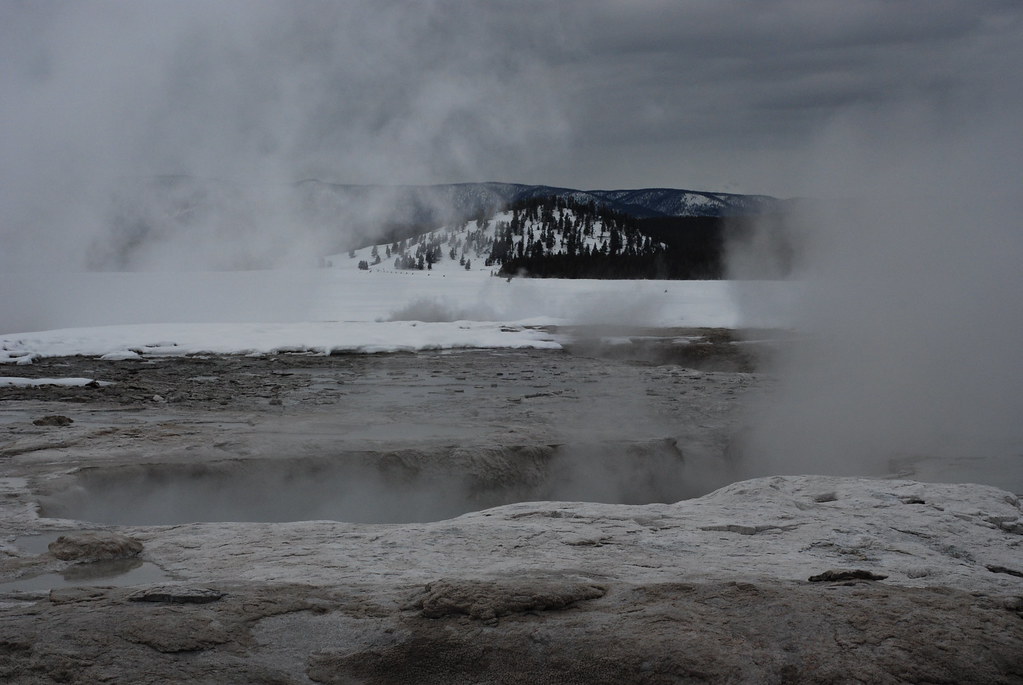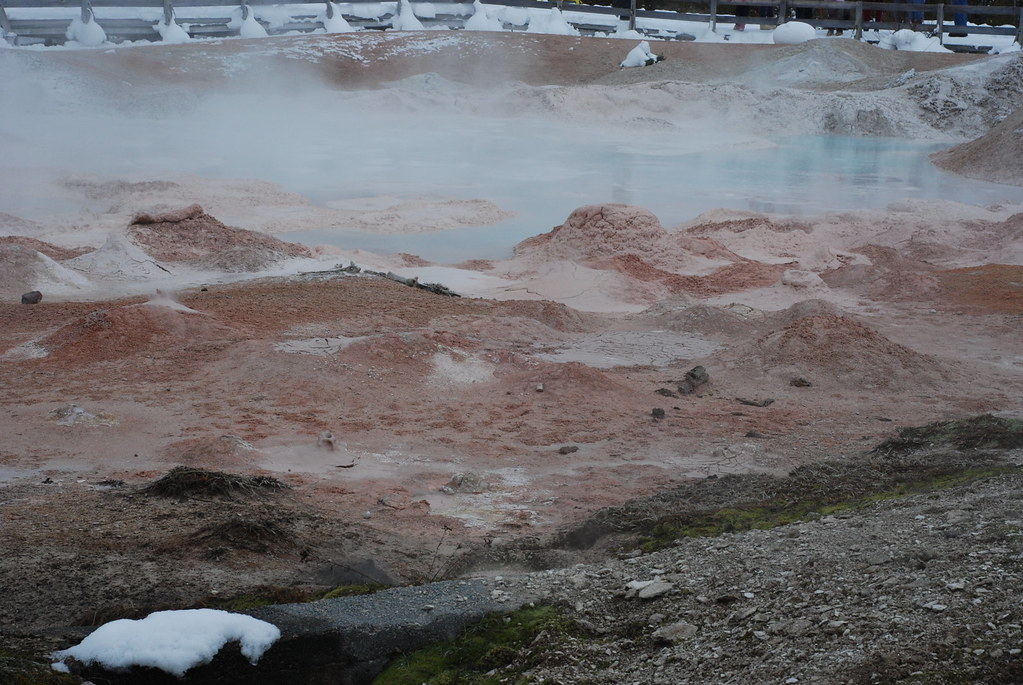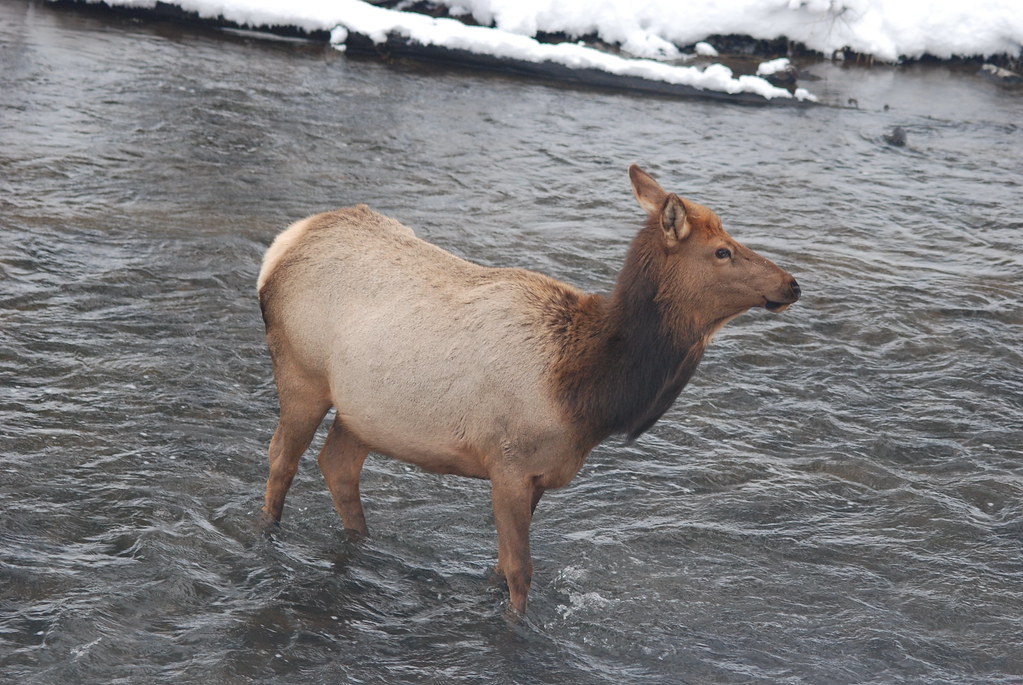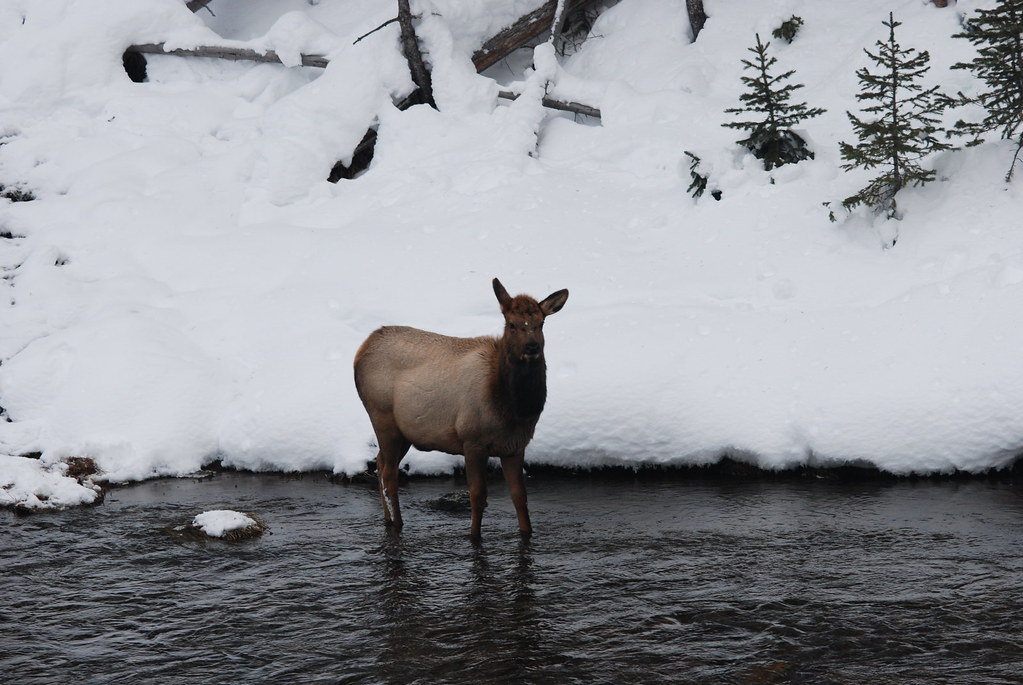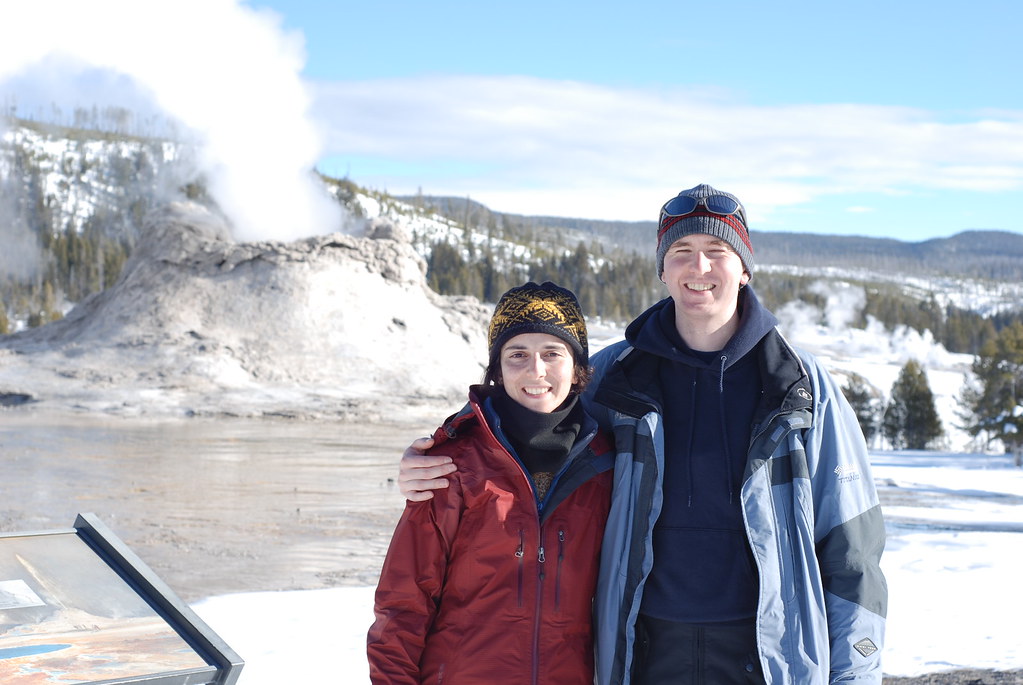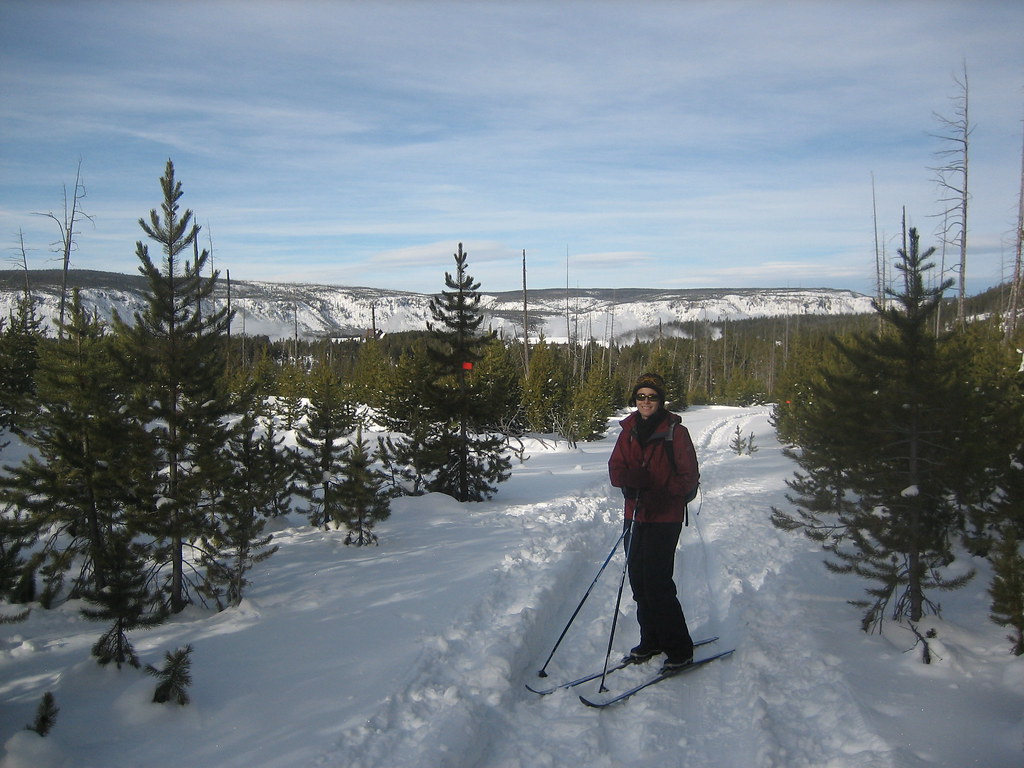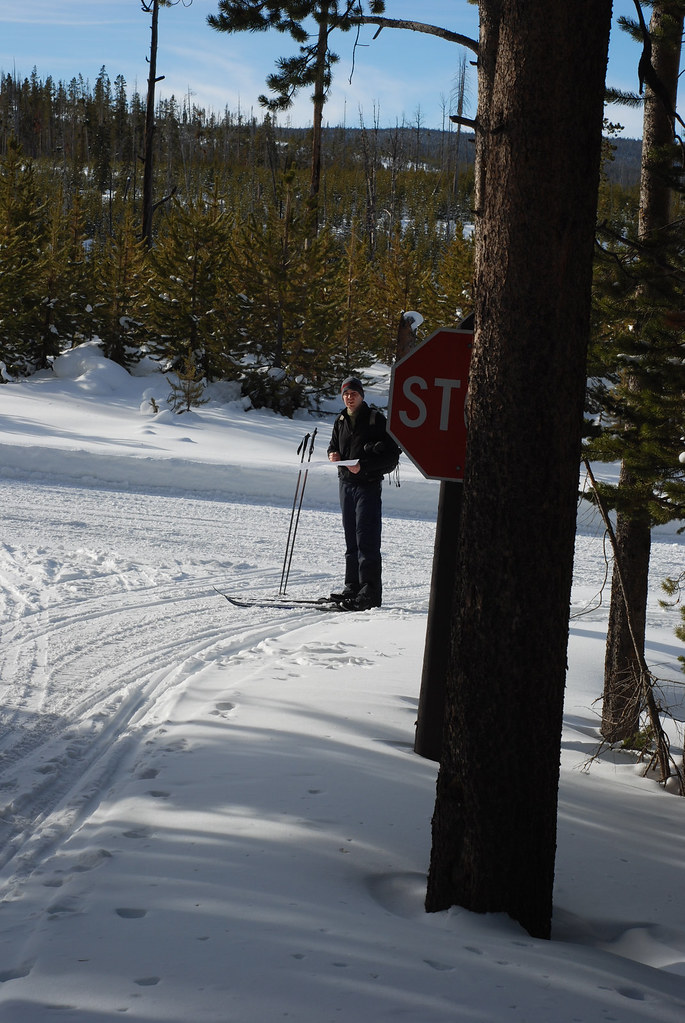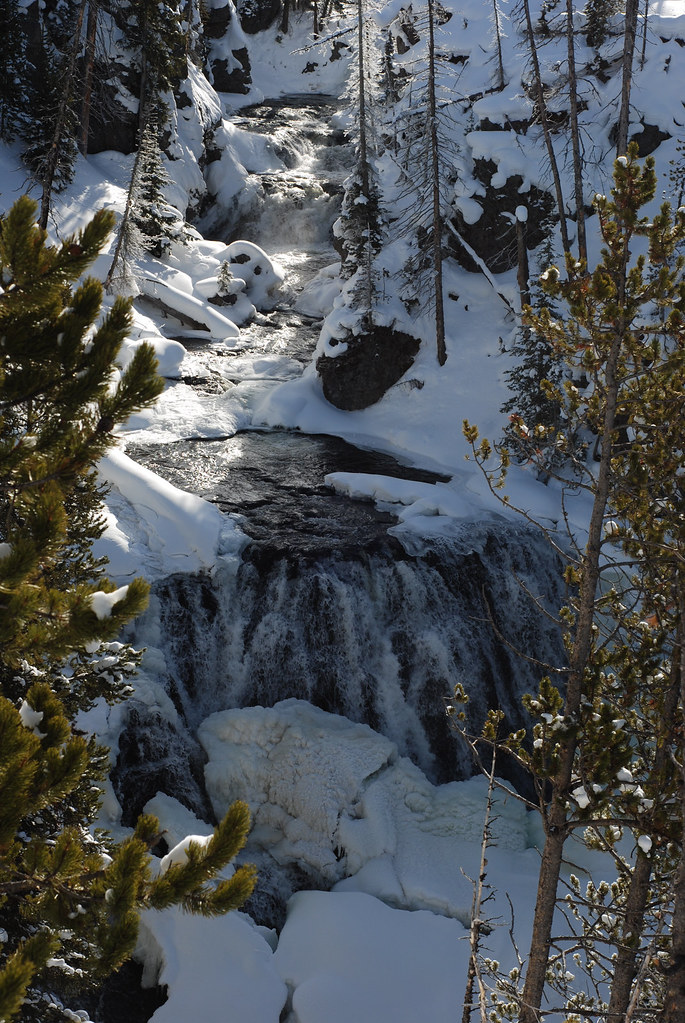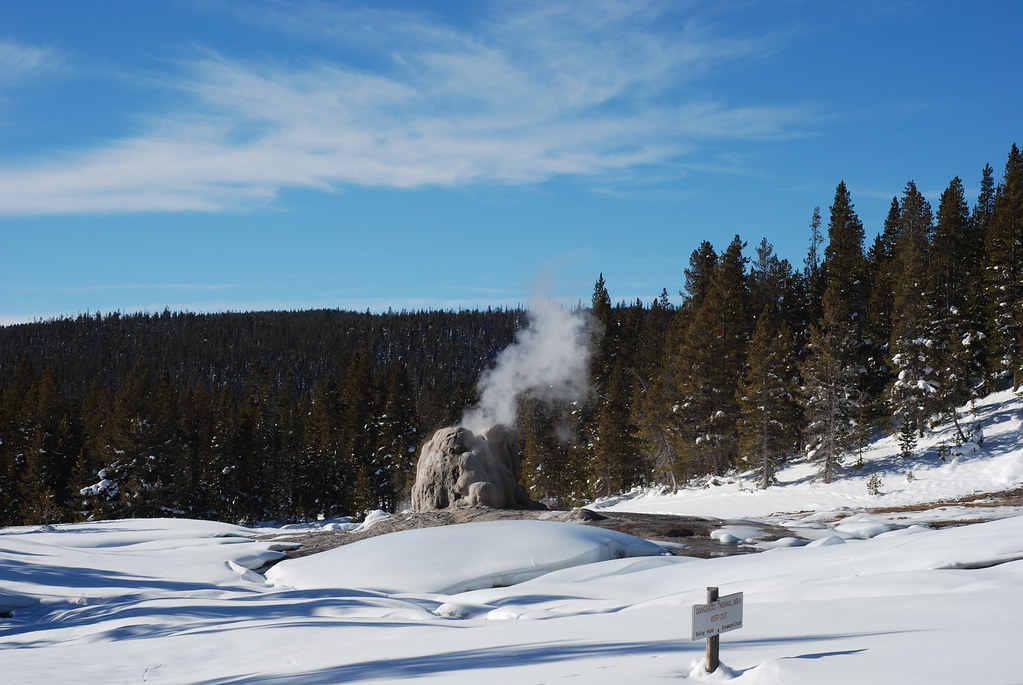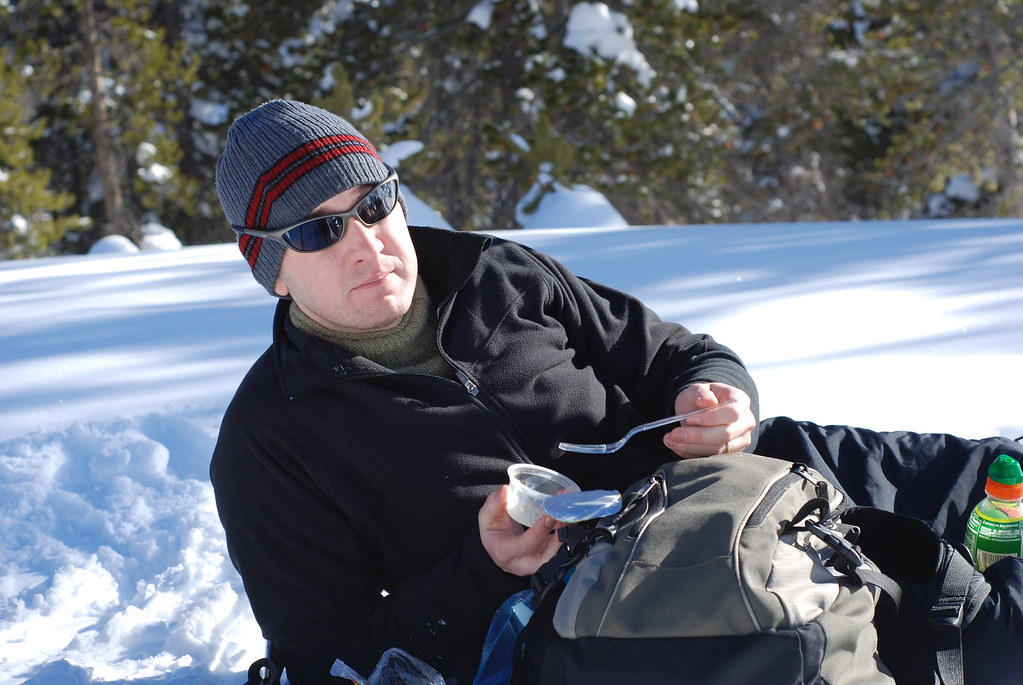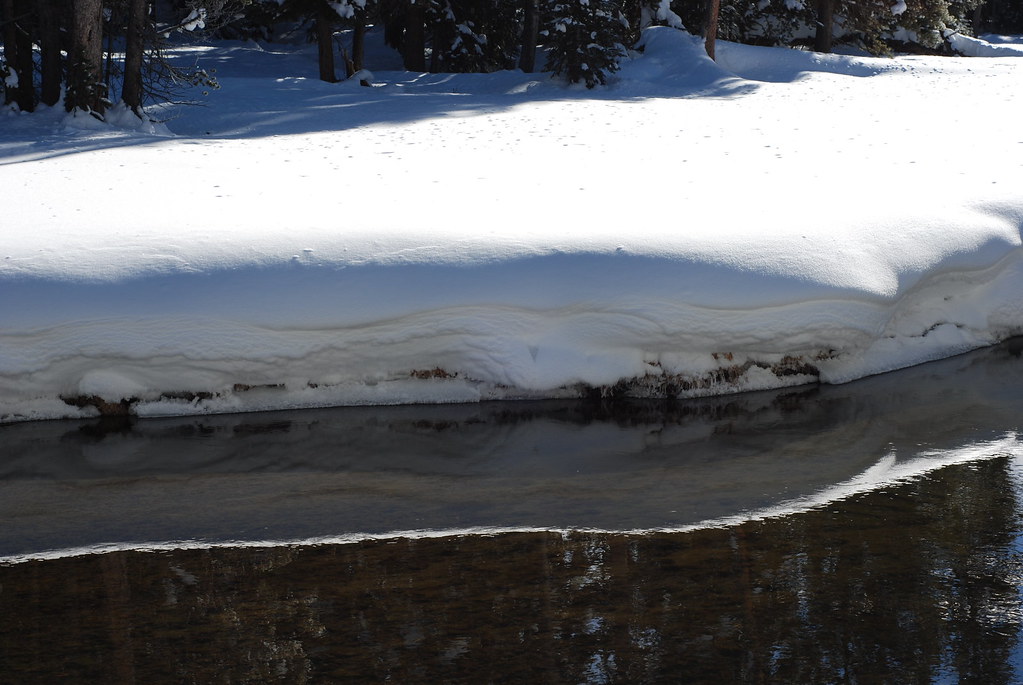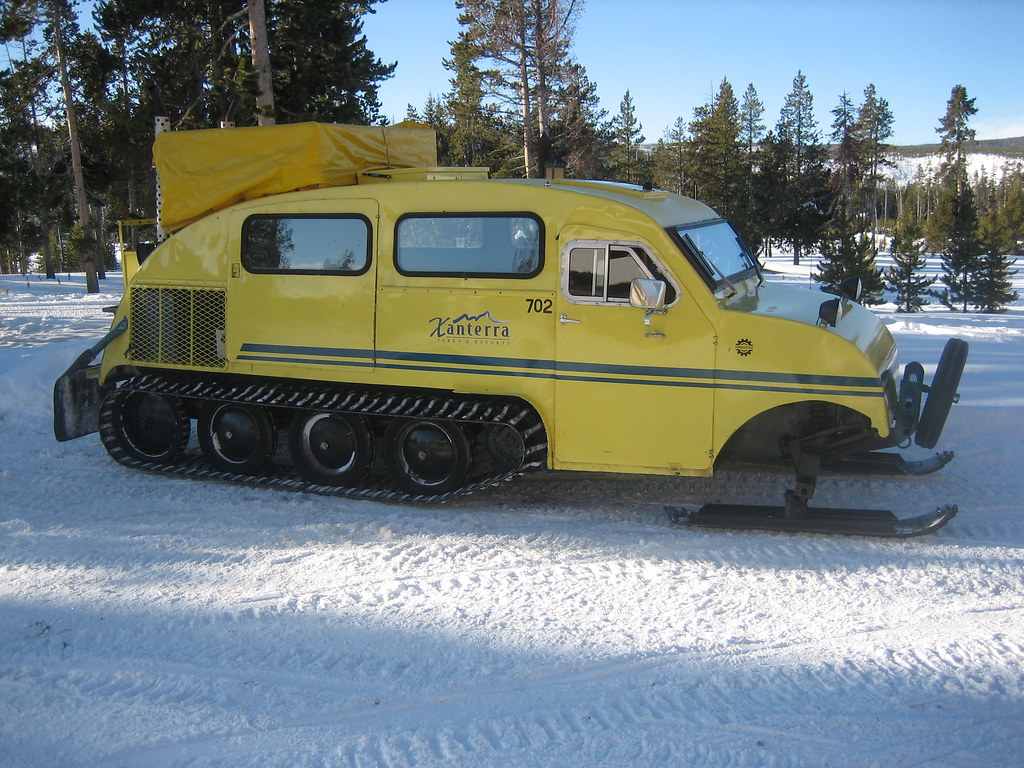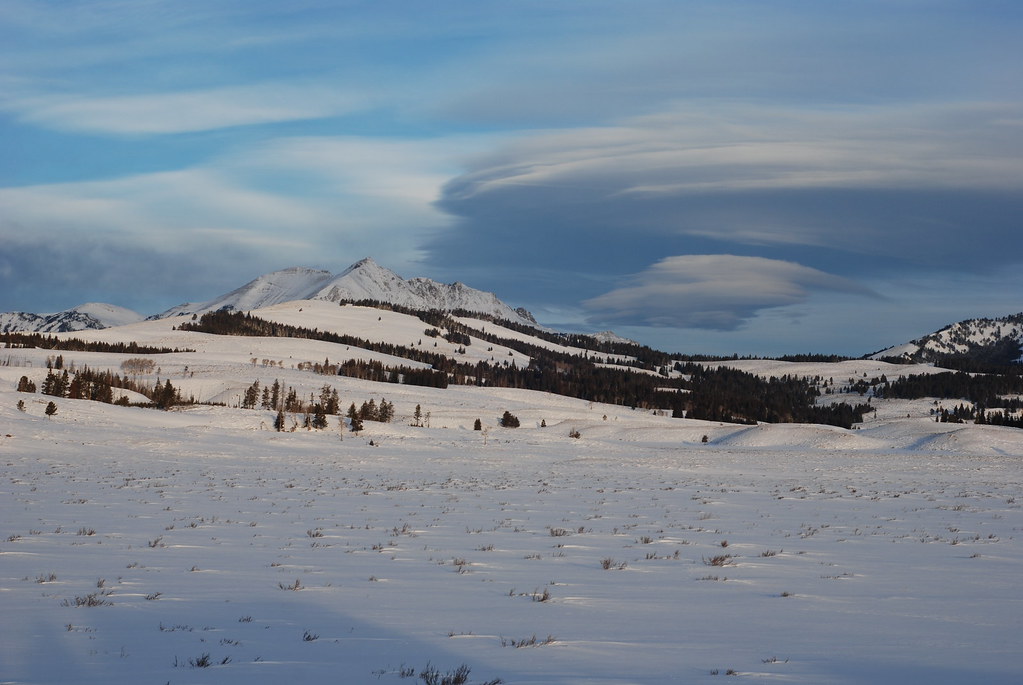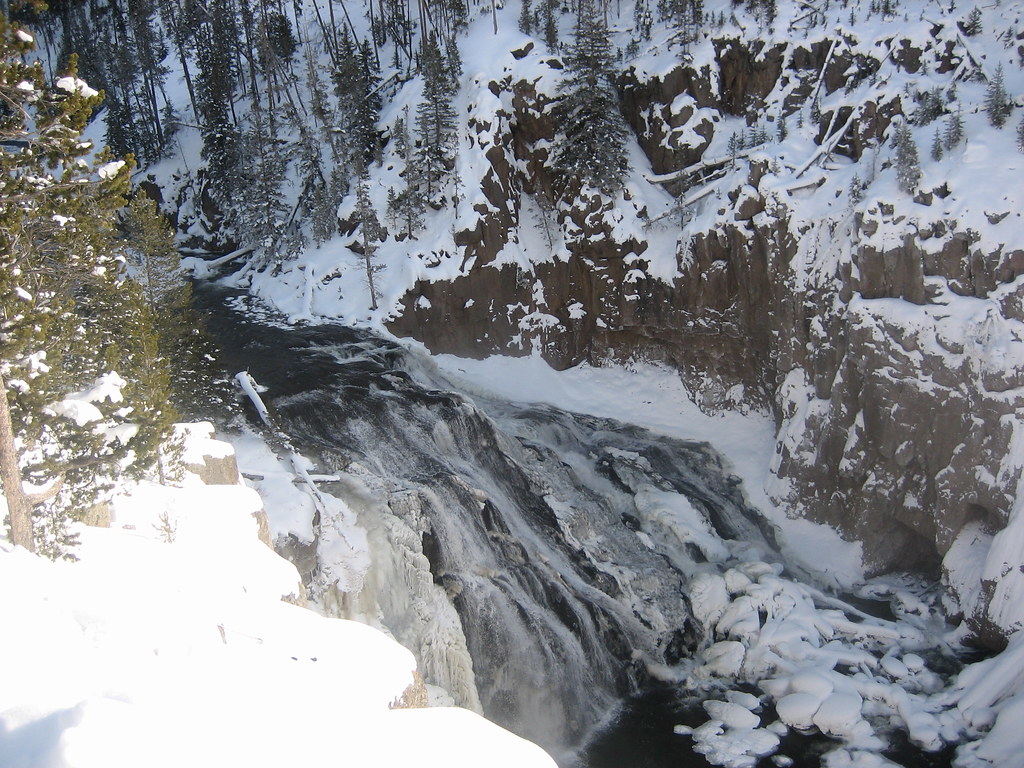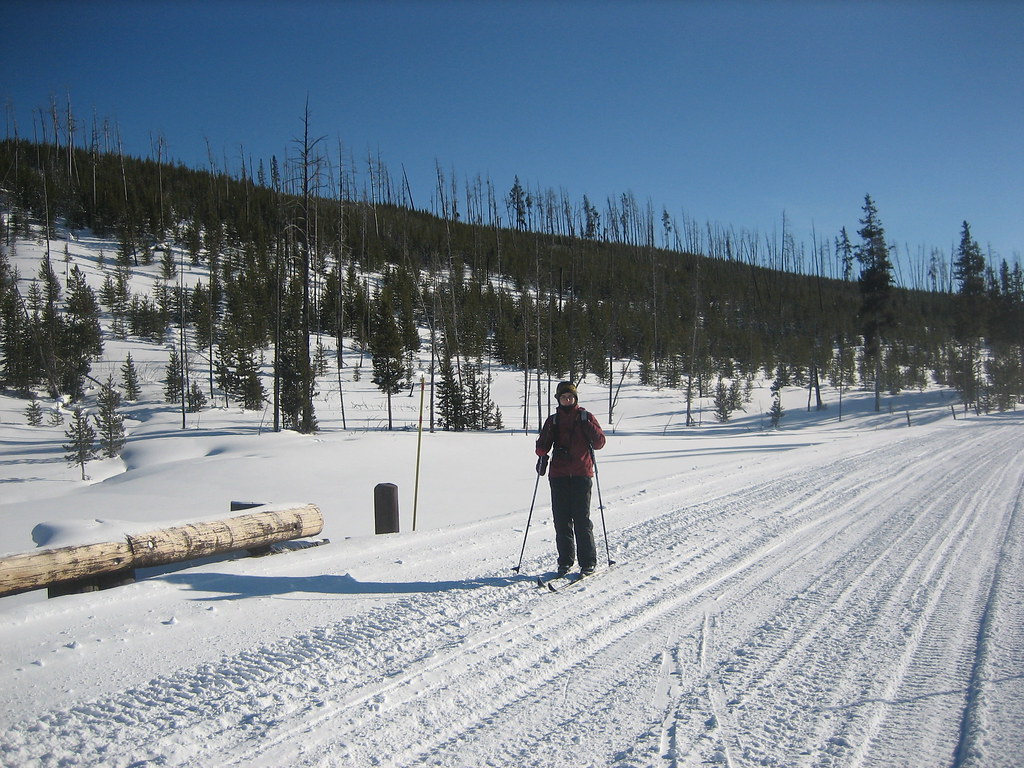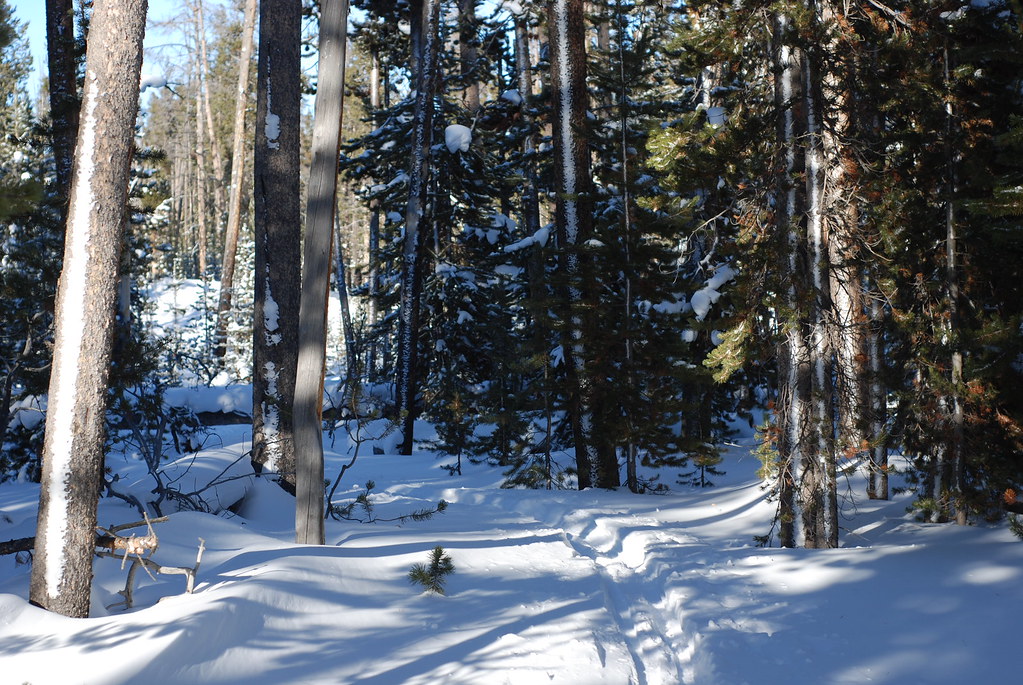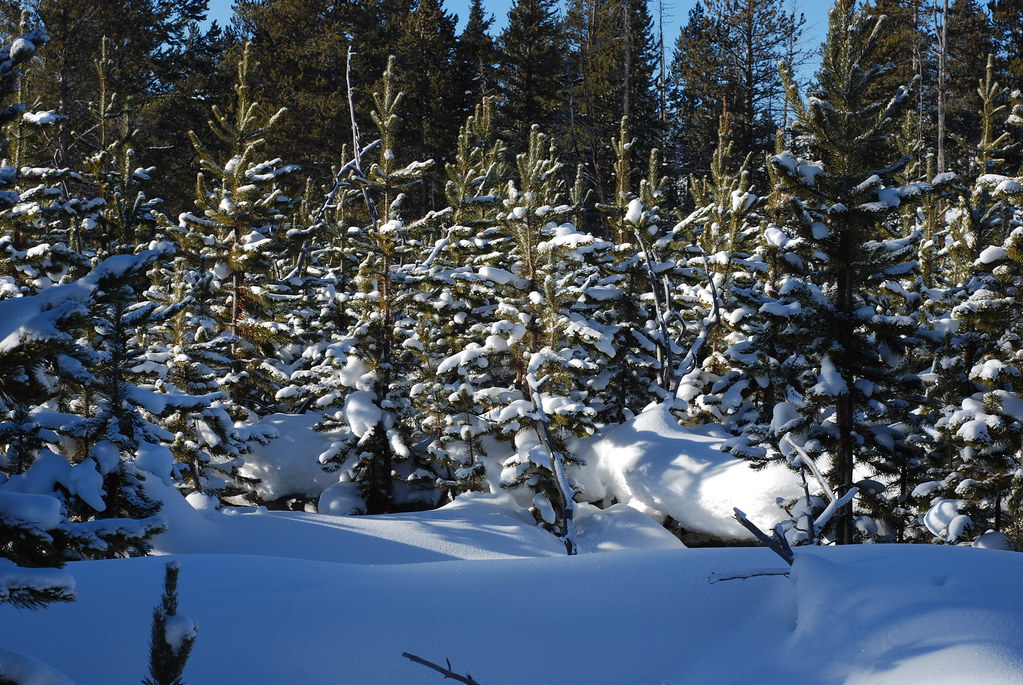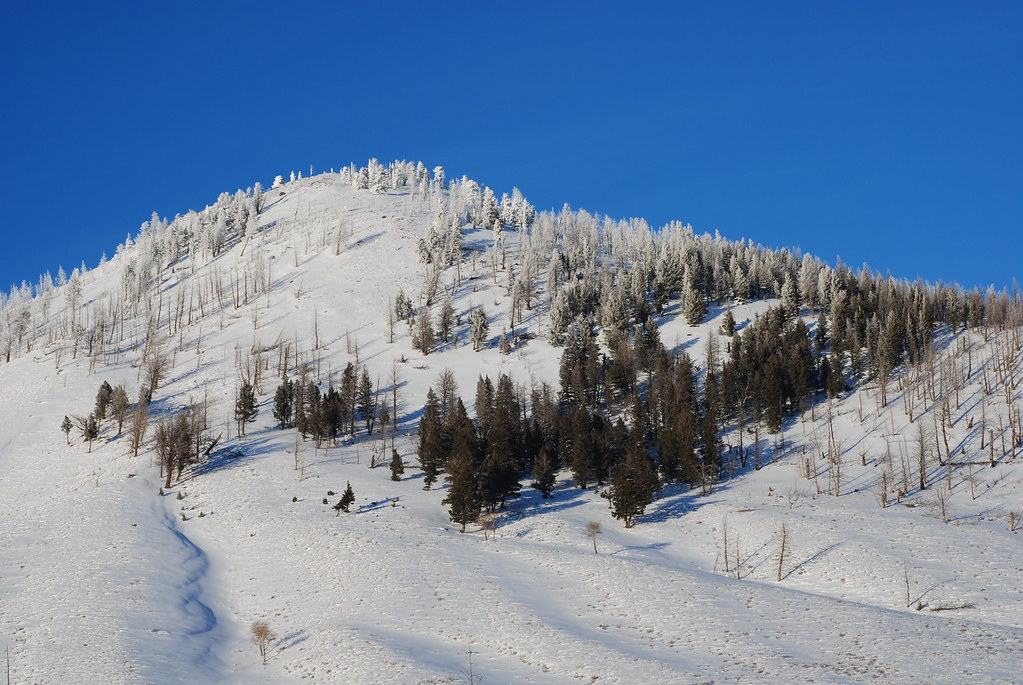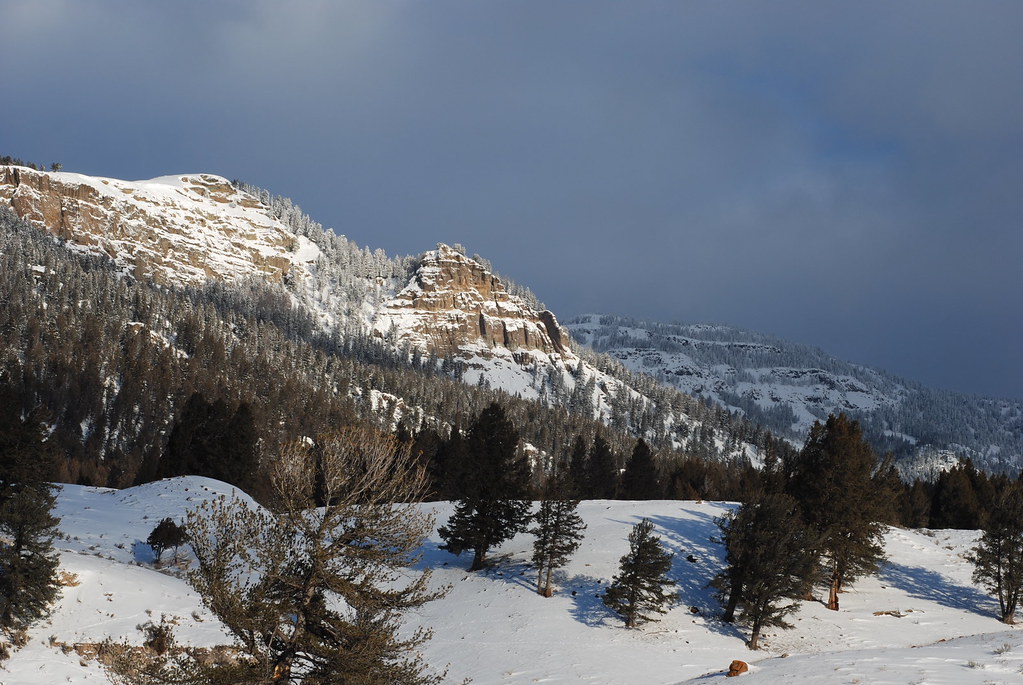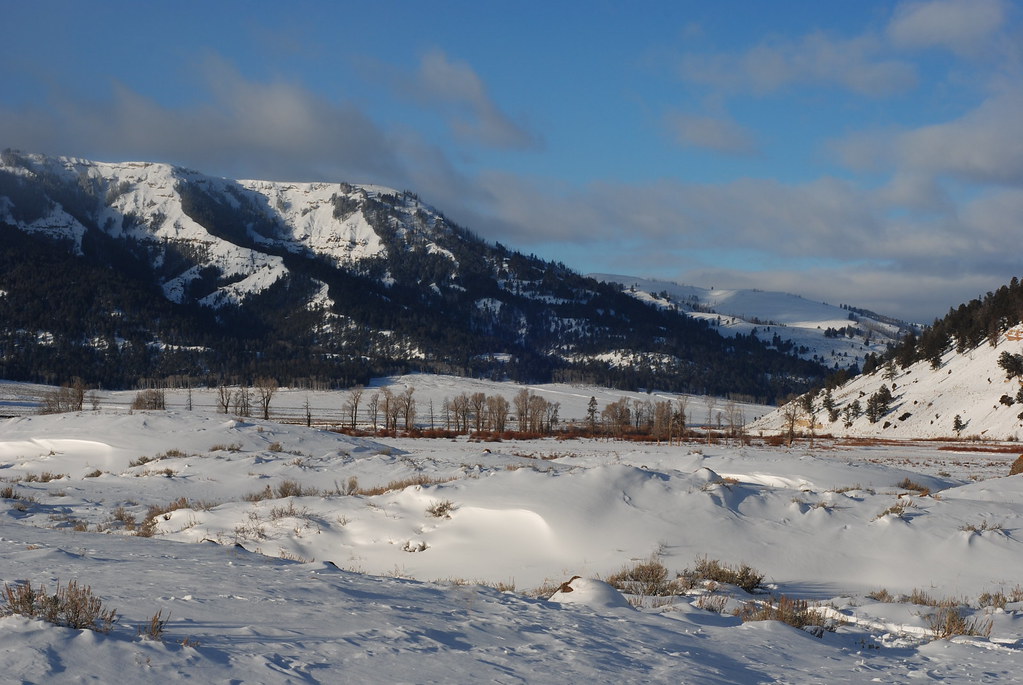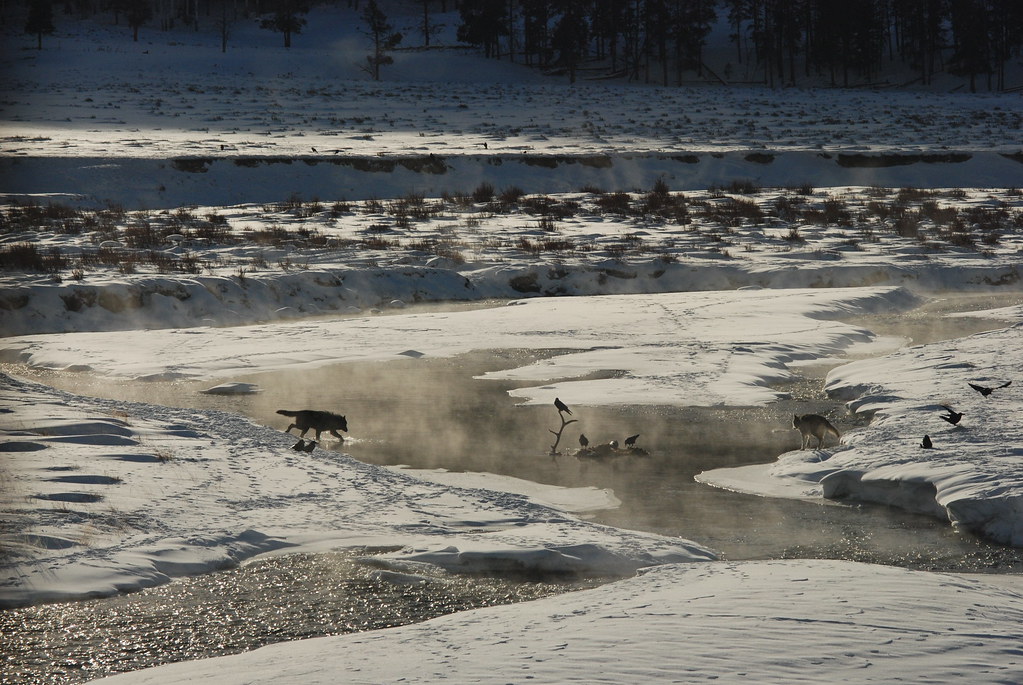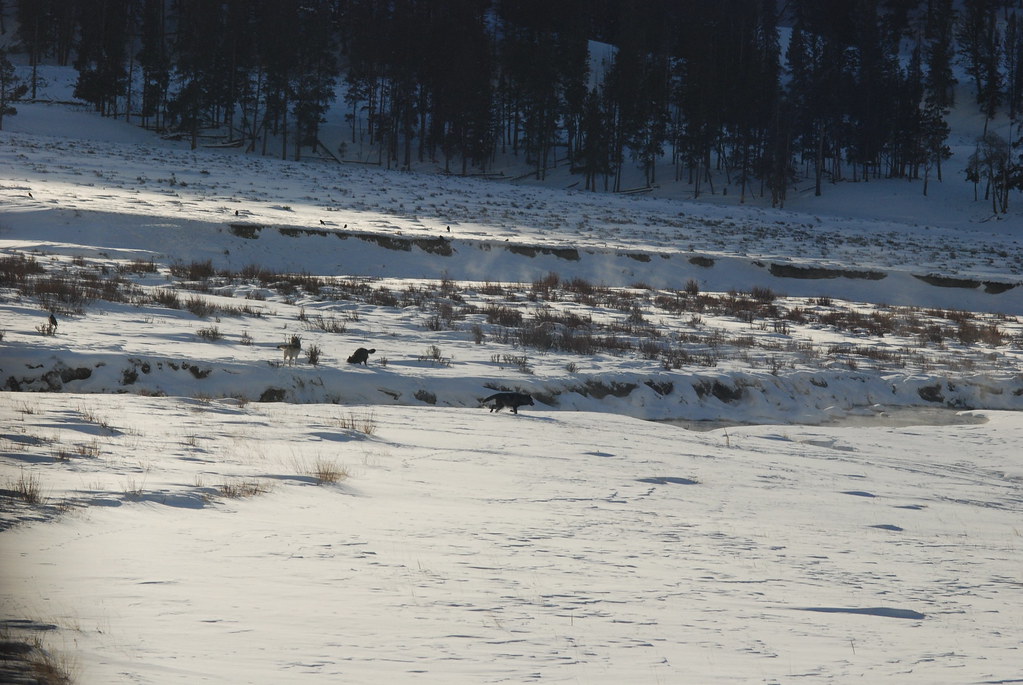During the winter only the North Entrance into the park is open to cars, and travel is only permitted along the road between Gardner, MT and Cook City, MT, which runs through Lamar Valley. Travelers need to ride snow coaches or snowmobiles in order to get anywhere else in the park. During the winter only 2 hotels are open, Mammoth Hot Sprints Hotel and Old Faithful Snow Lodge, and luckily we got to stay in both.
Photos
A selection of the favorite photos I took
A selection of the favorite photos Nick took
All the digital photos Nick and I snapped during our journey
Our Trip Summary
(Click on the links for more details on each of our "adventures")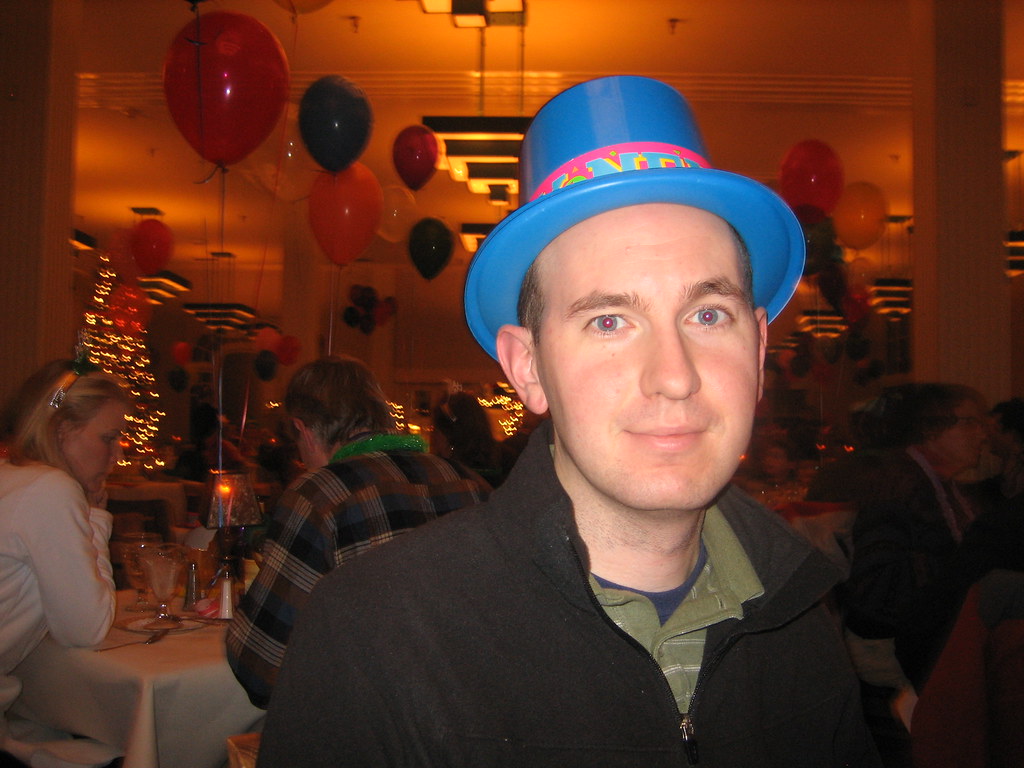 We flew into Bozeman, MT, on December 31st, and took a shuttle down to Mammoth Hot Springs Hotel in Yellowstone. We were now in Yellowstone National Park for the first time in winter--one of many firsts for us that day. We celebrated New Year's Eve by having dinner in the Dining Room at Mammoth, and by going to bed shortly after 10 pm, when 2008 has arrived in Boston.
We flew into Bozeman, MT, on December 31st, and took a shuttle down to Mammoth Hot Springs Hotel in Yellowstone. We were now in Yellowstone National Park for the first time in winter--one of many firsts for us that day. We celebrated New Year's Eve by having dinner in the Dining Room at Mammoth, and by going to bed shortly after 10 pm, when 2008 has arrived in Boston.
Up bright and early on the first day of the new year, we spent the morning on a guided tour of Lamar Valley, and went out x-country skiing in the afternoon.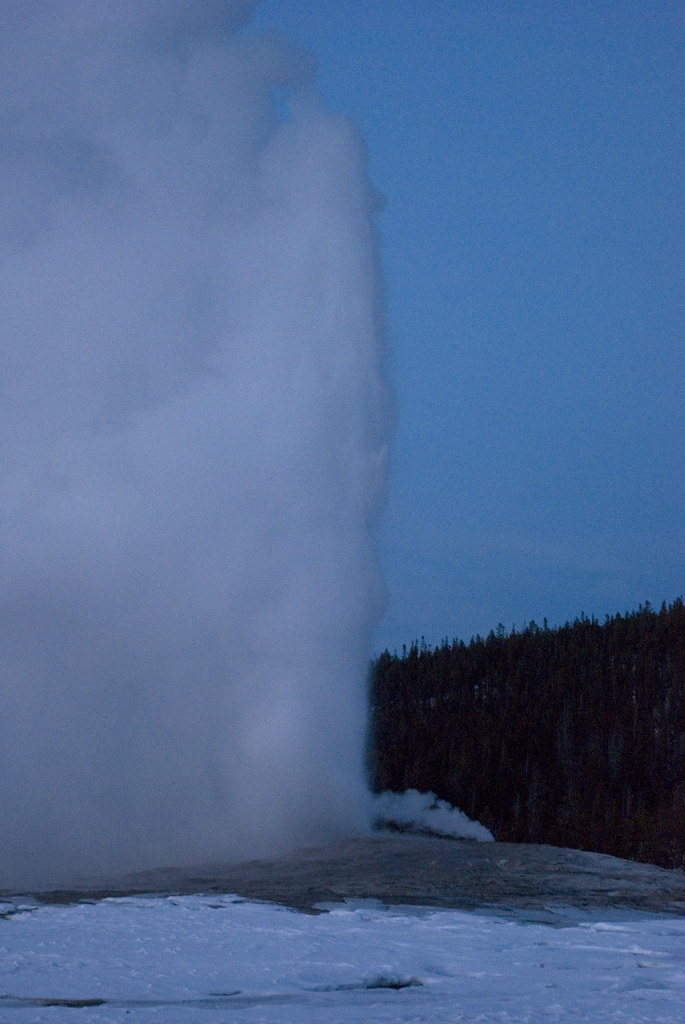 After two nights at Mammoth, we took a guided snow coach ride to Old Faithful. In the afternoon, we took a walk along the boardwalks in the Old Faithful Geyser Basin and reminisced about the time we spent here in September 2005. In the evening, we went back into the wilderness with the "Steam, Stars, and Winter Soundscapes" tour, which did not exactly live up to my expectations.
After two nights at Mammoth, we took a guided snow coach ride to Old Faithful. In the afternoon, we took a walk along the boardwalks in the Old Faithful Geyser Basin and reminisced about the time we spent here in September 2005. In the evening, we went back into the wilderness with the "Steam, Stars, and Winter Soundscapes" tour, which did not exactly live up to my expectations.
We spent most of the next day x-country skiing again. We came back rather tired, but still managed to have a rather eventful evening.
After spending two nights at the Old Faithful Snow Lodge, we took the guided snow coach ride back to Mammoth Hot Springs.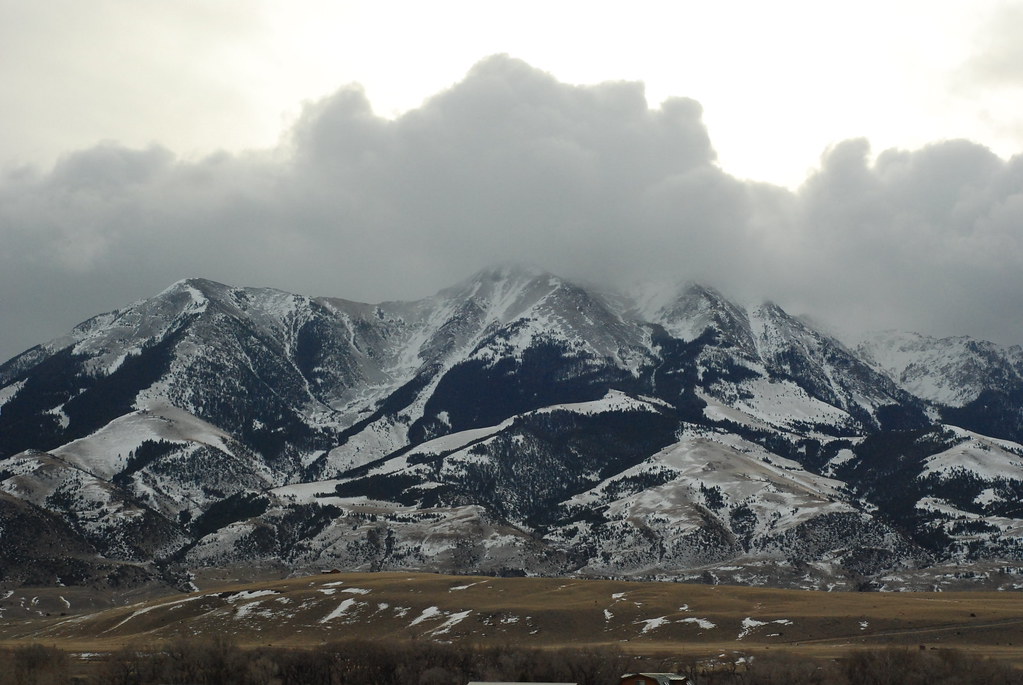 It snowed all through our last night in the park, and it was still snowing in Mammoth when we were leaving. Despite all the new snow, our shuttle ride back to Bozeman was relatively quick, and extremely beautiful.
It snowed all through our last night in the park, and it was still snowing in Mammoth when we were leaving. Despite all the new snow, our shuttle ride back to Bozeman was relatively quick, and extremely beautiful.
Memorable Facts
In the evenings both the Mammoth Hot Springs Hotel and the Old Faithful Snow Lodge hosted various events. There was live piano playing at the Old Faithful Snow Lodge every night. Some of the interesting bits of information I picked up at the 2 events that Nick and I went to:
- While in most places on Earth magma is approximately 40 miles below the surface, in Yellowstone magma lies only about 5 to 8 miles below the surface.
- Wolves and ravens cooperate when it comes to scavenging for food in the winter. Ravens might find a winter kill sooner, but they need wolves to break for the hide so that the birds can get to the meat.
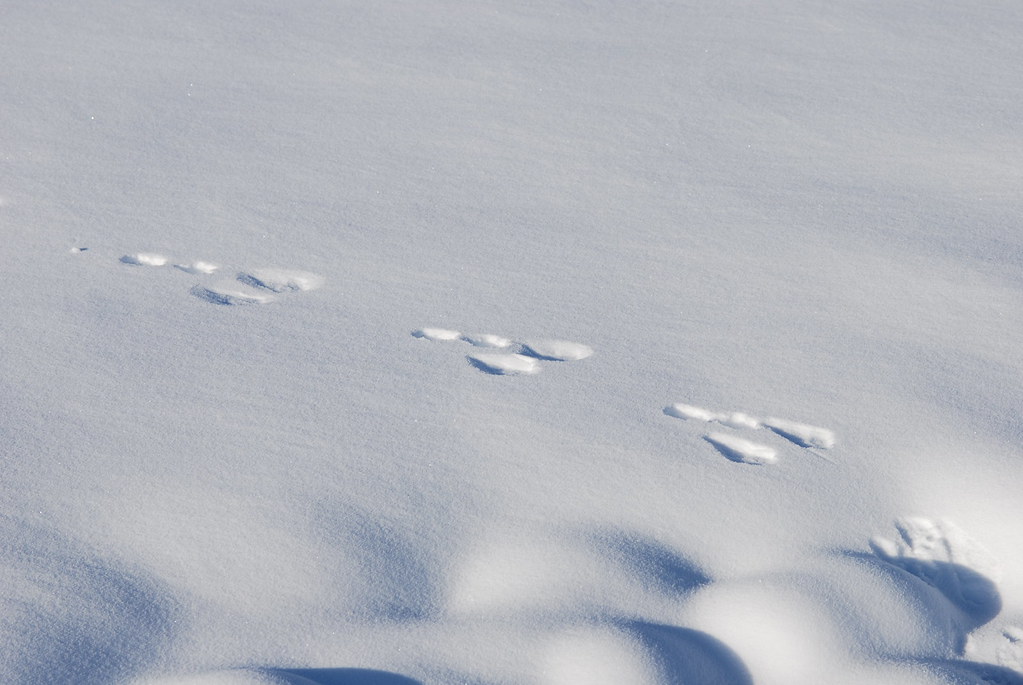 Snowshoe hare tracks look “backwards” relative to the direction in which the animals are moving because they first land on their front paws, and their hind paws then land beyond their front legs.
Snowshoe hare tracks look “backwards” relative to the direction in which the animals are moving because they first land on their front paws, and their hind paws then land beyond their front legs.
A Memorable Quote
“If you want a turtle, I’ll give you a turtle,” said I in an effort to get sniffling Nick to drink some hot tea. No animals were hurt in the process--the turtles were chocolate covered caramels.
